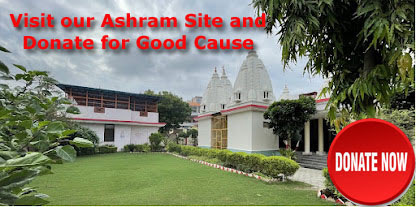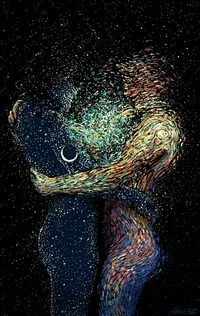 Chhath is a Hindu festival, the most
multifaceted Hindu ritual of Sun worshiped. This festival is celebrated on the
sixth day of Chhath-Kartik-Shukla.
Chhath is a Hindu festival, the most
multifaceted Hindu ritual of Sun worshiped. This festival is celebrated on the
sixth day of Chhath-Kartik-Shukla. This rare and complex ritual of God-Sun is celebrated mainly in the lowlands of Bihar, Jharkhand, Easter Uttar Pradesh and Nepal in eastern India.
Chhath festival of Hindu ritual
has become popular and famous all over the world as well as the diaspora
Indians gradually.
The most difficult and important
night of this four-day fast is the Kastik Shukla Shishthi. Chhath is celebrated
immediately after the Diwali festival of the new moon of Kartik month.
Chhath-ritual is a four day
festival of Hindus. It starts with Kartik-Shukla-Chaturthi and ends with
Kartik-Shukla-Saptami. Chhath-ritual devotees fasting for 36 hours. Devotees,
who are on fasting, do not even drink water during this period.
On the first day of
Kartik-Shukla-Chaturthi is celebrated as ‘Narav-Khay’. On this day devotees
cleaned the house to make it holy home for the Chhath-ritual.
After this, devotee (Chhath-vrati)
takes a bath and have a pure vegetarian diet before started the fast and then
all other house members take food. This food is made from pumpkin-pulse and
rice.
On the second day of
Kartik-Shukla-Panchami, a devotee has a meal in the evening after fasting
throughout the day. This meal is called as 'Lohand-Kharna-Prasad'. This
Lohand-Kharna-Prasad is offered to all the people of neighborhood.
This Lohand-Kharna-Prasad is made
of rice with the molasses of sugarcane juice, milk, rice pitcher along with
Chapatis of Pure Ghee (Ghee-ki-Roti). This Prasad is being restricted to use
salt or sugar. During this time, the special care is being taken to keep clean
kitchen and the whole house.
The Third day of this ritual is
called Kartik-Shukla-Shashthi. Devotee makes Chhath-Prasad on this day.
Chhath-Prasad used to call ‘Thekwa’ which is also called ‘Thikree’ in some
areas. Apart from this, the rice-laddus too added in this Chhath-Prasad.
After completing all the
arrangements, devotees prepare for Chhath ritual in which they arrange their
material in bamboo baskets and starts for final ‘Pooja’ for unstable sun
towards River Bank (Ghaat) with their families and neighbours.
All devotees (who are on fasting)
along with their relatives collectively reach to any pond or river bank for
Chhatt-rituals at a particular time in the evening. They do Ardha-Dan of Water
and Milk to Sun during this ‘Pooja’. This collectively funded charity to the sun,
seems to be a colorful fair like scenic beauty near the bank of rivers during
this ritual.
On the fourth day on the morning
of Kartik-Shukla-Saptami, the rising Sun is given Ardha. The vow is
re-established there, where he gave an Ardha-Dan in the evening.
Again the process of the previous
evening is repeated. At the end, Devotee (Vrati) drinks the juice of raw milk
after completing a little Prasad of Chhatt-fasting-vow.
There is a Chhath-Vrat in the center
of the Chhath festival, which is like a hard penance. It is often done by
women, but some men also keep this fast and ritual.
The woman who is fasting is also
called ‘Parvatine’ (devotee). This Chhath ritual has been a little tough being
in fasting for days.
The person who is fasting and
doing Chhath-ritual has to sacrifice his/her comfortable sleeping bed along with
regular normal food for four days during fast. People who attend this festival
always wear new clothes, but devotees (Vratis) wear such a clothes, in which
there is no stitching.
Women wear saris and men wear
Dhoti during these four days Chhath-ritual. Once this chat fasting is being
started by someone, then this has to be done for years until a married woman
from the next generation is prepared for it. But this festival is not
celebrated if someone dies at home.
It is a general believe that
women who are in fasting on the Chhath-festival are blessed by Son. Also, women
keep this fast for the son’s wishes and ability to do better in Life. But men
are also keeping this fast and perform Chhatch-Pooja with full devotion.
Worship of Sun’s Wives, ‘Usha’ and ‘Pratyausha’
The Chhath-rituals are basically
the festival of the Sun worship, which has a special place in Hinduism. In the
deities of Hinduism, the sun is such a God, which can be seen in the
embodiment.
There is a belief that the main
source of the powers of the sun is his wives name ‘Usha’ and ‘Pratusha’. In
Chhath, the combined worship is to be performed for two powers (Sun’s both the
wives) is accompanied by the Sun. These two powers are symbolic to sun in a way
that in the morning, the first ray of the Sun is called ‘Usha’ and in the
evening, both of them are bowed to the last ray of the Sun is called
‘Pratyusha’.
Chhath Tradition Story
Worship of the Sun is from
Rigu-Vedic period. The Sun worship is mentioned and discussed in Vishnu-Purana,
Bhagwat-Purana and Brahma-Vaivarta-Purana.
The Chhath-ritual of the Sun has become
a systematic festival in Hindu culture till medieval period, which is still
going on. This ritual is compulsory to be performed near the bank of any river
or pond.
The practice of Sun worship became more and more prevalent during the mythological era. At the end of a North-Vedic era, people imagined the human form of the Sun. Then the same belief took the form of idol worship of the Sun. Due to this the Sun's temples were also built in this Mythological Period (Era). Also, the Sun was considered to be the God of health in the Era.
Probably this is the beginning of the Chhath festival. As per one story that Lord Krishna's grandson had leprosy. To get rid of this disease, the special rituals have been performed by the Shakya Island Brahmins.
The
sun in the form of deity is found in the Rig-Veda for the first time. But the
rituals and worship of the Sun use to perform in a different form in every
civilization.
After
Rig-veda, all other Upnished and Vedas have mentioned and discussed
prominently about the Sun. Autor Yask has also mentioned about the Sun in
the Hindu-Vedic-texts, Nirukta's. He placed the Sun in the first place in
comparison of other Gods and Goddesses.
The practice of Sun worship became more and more prevalent during the mythological era. At the end of a North-Vedic era, people imagined the human form of the Sun. Then the same belief took the form of idol worship of the Sun. Due to this the Sun's temples were also built in this Mythological Period (Era). Also, the Sun was considered to be the God of health in the Era.
Probably this is the beginning of the Chhath festival. As per one story that Lord Krishna's grandson had leprosy. To get rid of this disease, the special rituals have been performed by the Shakya Island Brahmins.
Dr. Shanker Adawal
Profile: www.connectingmind.com
Profile: www.connectingmind.com
Research work and articles on Bhrigu Nadi astrology: www.shankerstudy.com
Join my Facebook Group for free Astro Queries:www.facebook.com/adawal












































